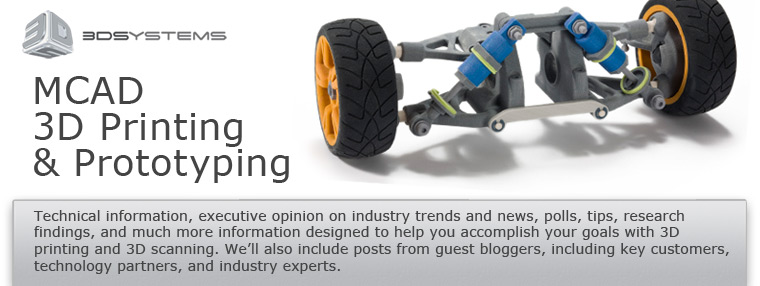Putting color on surfaces unreachable with paint is a snap for a 3D printer. Inspired by glass lampshades, I designed thin-walled parts with color on hidden surfaces. I wanted the parts to look white in daylight but glow with color when lit from within. I made votive candle holders with hollow sides, figuring I could put LEDs inside instead of candles. I modeled them in SolidWorks®, playing with sweeps and shells. I printed several iterations on a ZPrinter® 650 before I was satisfied.
Infiltration makes powder somewhat translucent, so color shows through thin walls. To achieve a white exterior, the walls need to be thicker than the color shell generated by ZPrint®. I found that walls of 1.3 mm (.050 in) were too thick for translucence and settled on a thickness of 0.8 mm (.031 in). I colored the parts directly in the solid modeling software. This allowed me to export to a VRML file rather than an STL. The VRML export produced smaller facets, which made the blob-like shapes smoother. I printed with a custom powder type consisting of zp150 at 120% saturation. This made it easier to depowder the bowl-like parts without sinking my thumb through the shelled-out walls when they were still green and heavy with powder. Bleed compensation was selected along with the default layer thickness of 0.1 mm (.004 in).
The parts were most translucent when infiltrated with Z-Max™ 90, but then the color was so visible that white and colored surfaces looked similar. I preferred the snowy, candy-like appearance of uncolored powder on the exterior produced by putting pastel color on the shell interior and infiltrating with Z-Bond™ 90. Most of my coworkers preferred more intense colors and Z-Max™ 90 infiltration. I missed my initial aim of hidden color, but I did get some fun parts that glow on my foray into extreme color 3D printing.
 |
Figure 1. Infiltration makes the color inside visible, even through a 1.1 mm (.045 in) wall. |
 |
Figure 2. Z-Bond 90 (left) gives a frostier look than Z-Max 90 (right) in these 1.1 mm (.045 in) wall parts. |
 |
Figure 3. Thinner-walled parts (0.8 mm or .031 in) glow more, but the effect of a white exterior is almost lost. |
http://www.zcorp.com

















